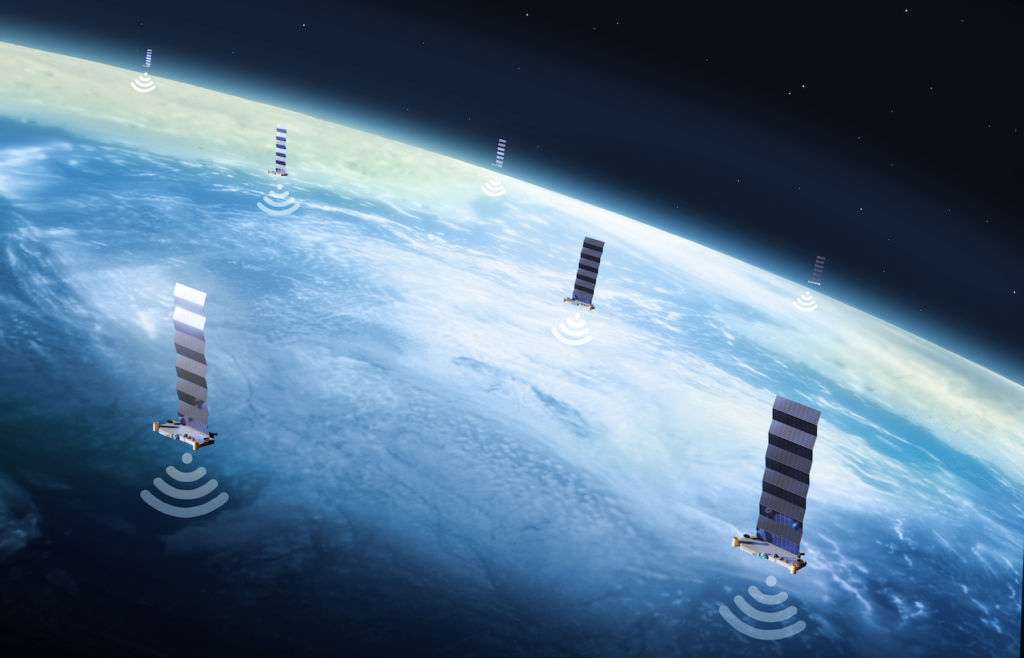Before jumping into the nitty-gritty details of Starlink and Mr Musk, let me just say: I know I’m late to covering Starlink’s debut in Kenya. While Musk was crafting his sci-fi internet solution in the skies above, I got distracted by earthly responsibilities. But no matter—there’s no expiration date on illuminating innovation, even if I’m behind the curve.
For the unacquainted, Starlink offers Elon Musk’s answer to the thirst for lightning-fast internet across the African countryside. Promising fibre-like speeds without the cables or constraints, this brazen network of satellites in low orbit aims to bring broadband to the most remote areas in Kenya, including Nyamira, which was once nominated as the “dullest” region in Kenya, haha.
Well, I believe true understanding requires background before details.
So first, an introduction to this satellite network crisscrossing the Kenyan landscape with access to online worlds once unfathomable at the equator…
The rest covers the gritty specifics—from rollout locations to connection equipment to the shillings it will cost you. While visionary in scope, even Musk’s ambitions must contend with on-the-ground practicalities. And it seems to be late has its advantages, as early tests suggest Starlink will deliver the speed.
Where is Starlink Available in Kenya?
Starlink rolled out its satellite internet service in Kenya on July 18, 2023.
Initial beta test locations for home internet services included Laikipia, Meru and Kitui before expanding more widely. By the end of 2023, Starlink reports covering a majority of Kenya but aims for complete national coverage over time.

Its fleet of low Earth orbit satellites blankets the landscape, beaming high-speed broadband to remote pastoral communities as readily as dense cities like Nairobi or Mombasa.
Exact rollout locations remain opaque as Starlink fills more cells of 15-20 mile coverage across Kenya daily. But the company promises to expand service until no acre lies outside its satellite constellation sweep.
How to Check Availability at Your Location

Before going through this, please note that Starlink is available in all parts of Kenya. Nevertheless, confirming coverage is a simple process:
- Go to Starlink’s website and enter your location. Any address in Kenya should work. Alternatively, you can zoom in to your location on the available satellite map.
- View availability results for your exact address. If Starlink is available, you can place an order immediately.
- If not yet available, you may join a waitlist to get updates on expanded coverage. Give both email and mobile contacts to ensure Starlink reaches you promptly once service opens in your area.
- Keep checking back periodically if waitlisted, as new capacity comes online rapidly. Availability today does not guarantee availability tomorrow with limited satellite bandwidth shared across users.
Starlink’s website also shows internet speeds in your vicinity reported by other users, so you know what to expect performance-wise if covered. But don’t get dismayed by waitlists, as Musk’s rocket launches mean coverage expands to more Kenyans every month.
Starlink Equipment and Installation
Receiving Starlink hardware kits is the first step after ordering service online. Inside the box, you’ll find satellite equipment including:
- Starlink satellite dish with mount/tripod
- WiFi router to connect devices
- Power supply, cables and cords
- Accessory pack with pipe, clamps, screws etc.
Professional installation through a certified electrician or technician ensures proper setup. These services are offered by Karibu Connect, once you purchase the Starlink Kit from them.

But for DIY installation, follow Starlink’s instruction guide outlining the step-by-step process for positioning and aligning the dish.
Correct placement is key – the small flat satellite dish requires a wide, unobstructed field of view skyward. Avoid trees, buildings and other structures blocking visibility northwards towards Starlink orbits. Higher is better.
Run cables neatly from dish to router indoors, connect power, then follow app guidance to optimize signal strength. Expect a few incremental dish adjustments while checking for obstructions on your property. Voila! You’re ready to connect devices and start surfing the stars.
Pricing and Affordability
Starlink offers premium satellite internet but seeks affordability to serve all income levels globally. Here is Starlink’s current Kenya pricing:
One-time hardware costs
- Satellite kit: KES 89,000
- Shipping and handling: KES 3,100
- Total: KES 92,100
Monthly subscription
- Service: KES 6,500
- Includes unlimited data at 200Mbps speeds
Check their official page for more.
Compared to terrestrial competitors like Zuku, Jamii and Safaricom Fiber providing home fibre, cable or copper wiring, Starlink represents excellent value despite higher startup costs – especially for rural regions lacking digital infrastructure.
Unlimited high-speed data without landline limitations makes Starlink the premier option versus expensive LTE plans throttling speeds after paltry monthly data limits. For perspective, average families exceeding Safaricom’s 150GB cap pay KES 30,000 for an additional 500GB of data yet still endure connectivity constraints.
Speed and Performance


With low Earth satellites orbiting much closer than traditional providers, Starlink minimizes disruptive latency while boosting speeds. Early beta tests across Kenya saw users recording 200 Mbps download and 20 Mbps upload speeds on average during optimal conditions.

That’s on par with or above fibre optics, with a latency of around 25-75ms similar to terrestrial broadband. Even heavy usage has little congestion effect thanks to the continuous expansion of Starlink’s orbital fleet. New satellites mean expanded capacity.
But being microwave signals from space, Starlink’s reliability depends somewhat on weather conditions. While uptime stays high overall, heavy rain or storm activity can temporarily degrade speeds and latency to still usable but noticeably reduced levels.
Clear skies offer the fastest, most consistent connections. So even if your region sees rainy seasons, the vast majority of typical uptime still outpaces most terrestrial options.
Reliability and Uptime
Starlink manages 99% uptime after initial beta bumps, providing more reliable continuous internet than any existing satellite provider. Service disruptions are rare when functioning normally, outside extreme weather or manual downtime for maintenance and upgrades.
The satellite redundancy built into Starlink’s constellation network prevents coverage gaps as spacecraft continuously circle the globe. Switching between satellites keeps customers connected seamlessly. Few in-home risks exist to jeopardize hardware once installed correctly.
Natural disasters like floods pose no problems, though winds may misalign dishes. Manual dish adjustment easily recovers signal, with the mobile app providing guidance. For complete blackouts, power banks offer hours of uptime, while generators enable indefinite service continuity if electricity fails.
With round-the-clock monitoring and local support, Starlink proves one of Kenya’s most resilient internet options to date. Even as systems leave beta, redundancy efforts continue ensuring customers stay online regardless of unexpected disruptions.
Extra Services and Features
Now that we’ve covered the basics of securing that coveted invite to access Starlink’s satellite service in Kenya, what other goodies come with a subscription?
Let’s delve into some bells and whistles beyond pure internet connectivity:
Portability – Planning a weekend braai in the Mara? Bring your Starlink dish kit along and move it wherever needed, then readjust for optimal satellite signals. Excellent for families on safari or nomads migrating with livestock seasons.
Smartphone app – Monitor uptime metrics, wifi users, dish alignment and data usage on iOS and Android. Conduct speed tests or tweak configurations from afar. Enable GPS tracking and get alerts if hardware is relocated or tampered with.
Gen2 dish (mid-2023) – Starlink’s next-generation dish ships later this year at no extra cost to subscribers. Promising faster speeds via upgraded antennae and motors, it even comes in sleek rectangular form vs the short stack of plates currently common.
Yeah, Starlink offers more than meets the eye! While satellite internet itself proves revolutionary for rural villages and remote regions, Starlink builds an entire smart ecosystem around their network in space.
Limitations and Challenges
Things aren’t all rosy for Starlink though – some limitations and challenges include:
- Strict landlord restrictions in apartments or estates sharing dishes between tenants pose difficulties for urban customers.
- Frequent storms with heavy lightning may impact consistency for some customers during rainy seasons.
- Ongoing congestion in densely populated areas can throttle speeds at times until expanded satellite capacity launches.
But Starlink works actively to mitigate constraints through continuous improvements while promoting regulatory easing for broader residential access. Users also adapt to weather patterns and optimize dish placement to minimize disruptions from storms when feasible.
The Future of Satellite Internet in Kenya with Starlink
While still early in its African rollout, Starlink’s impact on Kenya’s digital landscape seems assured. No longer shackled by landline infrastructure costs, even rural citizens gain affordable high-speed access to bridge the online divide.
As SpaceX continues rocketing satellite batches into orbit, coverage widens and capacity grows by orders of magnitude. This facilitates expansion across Africa – where internet penetration lags behind global rates. Additional ground stations are planned to interlink terrestrial fibre backhaul with Starlink’s backbone for maximum throughput.
Competitors will surely arise, but none match SpaceX’s scintillating launch cadence today. Perhaps in the future, advancing satellite and robotics technologies will allow drones or autonomous barges to position floating data centres offshore – connecting coastal Africa via Starlink for enhanced reach.
For now, consumers and businesses alike rejoice at the newfound connectivity Starlink enables. Kenyans are already embracing modern conveniences from telemedicine to online banking that others may take for granted. And Musk’s vision has only just begun altering internet accessibility across the continent one dish at a time.
Online Starlink Reviews
Elon Musk’s SpaceX sent me a Starlink Standard Kit. The satellite dish has been on my roof ever since and does a good job – for a hefty price.
Martin Jud from DigitecAs it stands today, Starlink seems to be the best fit for people outside of town, in areas not served by existing providers such as AT&T or Xfinity. If your contract with your existing internet rural internet provider is up next year, and none of the above scares you off, it’s worth considering a spot on the Starlink waiting list.
Todd Bisshop from GeekWireConclusion
We’ve illuminated Starlink’s fledgling foray over Kenya – from envisioning ubiquitous global broadband to navigating rollout nuances nationwide. While limitations exist and better options may yet emerge, early subscribers are wowed by satellite internet’s first whirls.
What do you think of the Starlink internet service by SpaceX? Leave your comments down below.















